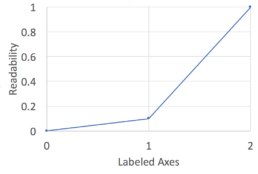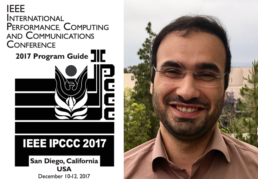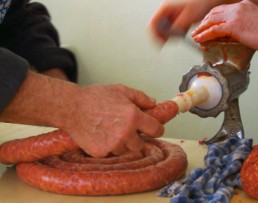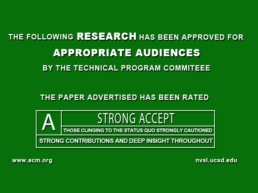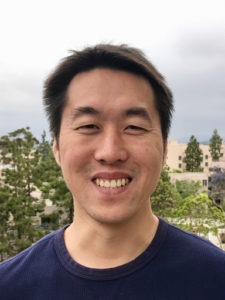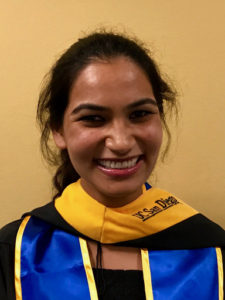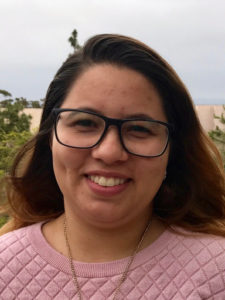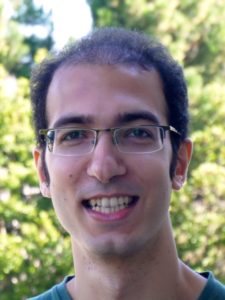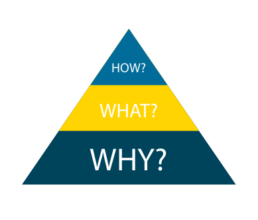Steven Swanson
Creating Decent Graphs
Good graphs help convey your insights about the system you have built and/or measure by providing the information your reader needs and wants. Bad graphs can leave the reader baffled, squinting, and drawing the wrong conclusions about your work. While it's not reasonable to expect astonishing insight from every graph, you can always make the readable and easy to interpret.
Morteza Wins Best Paper Award
Morteza Hoseinzadeh's work at Samsung over the summer won the Best Paper Award at IPCCC 2017. The work focuses on optimizing the performance of NVMe storage systems in the cloud. Morteza's collaborators include Professor Ningfang Mi and PhD students, Zhengyu Yang and Janki Bhimani from Northeastern University. Well done, Morteza!
The Expertise, Ignorance, and Personal Failings of the Program Committee (and Other Readers)
A research paper's task is to convey the insights of your work to your audience -- first the reviewers and then your research community. To get published, your paper must satisfy the program committee. Once published, it has to hold the interest of other researchers and engineers. If it fails at either of these tasks, it will not have the impact it should.
Engineering Reliable Persistence @ ACM SIGARCH Blog
Integrating non-volatile main memories (NVMMs) into the storage/memory hierarchy make data integrity a critical design consideration. Protecting data in NVMM is a complex problem: media errors and software bugs can corrupt data and the reliability of each memory cell degrades as it is used, potentially leading to premature failure. Hardware and software both have a role to play, but trying to solve problems in the wrong place can needlessly complicate the system, leave the system open to data corruption, and/or sacrifice performance.Read more
How the Sausage is Made
Until you've served on a program committee, the review process may seem opaque and mysterious. PC members generally try to do a good, impartial job of selecting papers, but PC's are human institutions, humans are flawed, so PC's are imperfect. Understanding the PC process can make the results less confusing, and provide useful guidance for crafting papers.
"Make it so, Number One."
You've done it! You have played the key role in a compelling piece of research. You are the first author. You get the glory, but you also have a lot of work to do.
An overview of Intel Optane technology -- Shattering the I/O Bottleneck
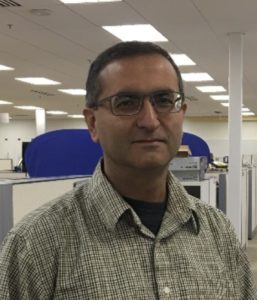
The I/O bottleneck has been a longstanding problem on computing platforms; disks are much slower than memory which is much slower than the CPU. While this is typically addressed by various forms of data and instruction caching and tiering, there remains a large gap between performance, cost, and densities of storage and main memory. We are tackling this problem head-on with IntelTM Optane technologies. The technologies use a new Non-Volatile Memory (NVM) which effectively fills the gap, and can be used in both Solid-State Drive and extended-memory applications. We introduce new metrics for evaluating performance of such fast NVM that can be used for both storage and memory applications, present results on example applications, and challenge the audience to innovate new system-level and application-level usages.
Sanjeev Trika is a Principal Engineer, and Director of Firmware/Software R&D, in the NVM Solutions Group (NSG) at Intel Corp. He leads key innovations in storage technologies, and holds 30+ patents.
Coming Soon to a Podium Near You...
A talk is like a movie trailer for your paper -- if you do your job, the audience should be excited to read it.
Movie trailers can rely on suspense, mystery, and movie stars to build excitement. You, however, will have to rely on the clear, direct communication of the WHY, WHAT, and HOW of your work, and that requires careful thought and judicious choices about what keep in and what to leave out.Read more
Andiry Presents NOVA-Fortis at SOSP in Shanghai
Andiry described building the world's first fault-tolerant non-volatile main memory file system at SOSP'17 in Shanghai. The resulting file system -- NOVA-fortis -- provides a mechanism to take consistent snapshots to facilitate backups and protects both metadata and file data from media and software errors. Here's the full paper.
While he was on the continent, Andiry is also presenting NOVA at Tsinghua University, Wuhan university, and Huazhong University of Science and Technology.
Well done, NOVA hackers!
WHY, WHAT, and HOW
Learning to identify good research problems and building successful projects around them is the core skill you will learn in graduate school. Until you master this skill, the distinction between good research topics and bad can seem mysterious and arbitrary. A first step in learning to identify good research is to realize that most successful systems research projects answer three questions: WHY is it interesting? WHAT does it contribute? and HOW does it do it?Read more
